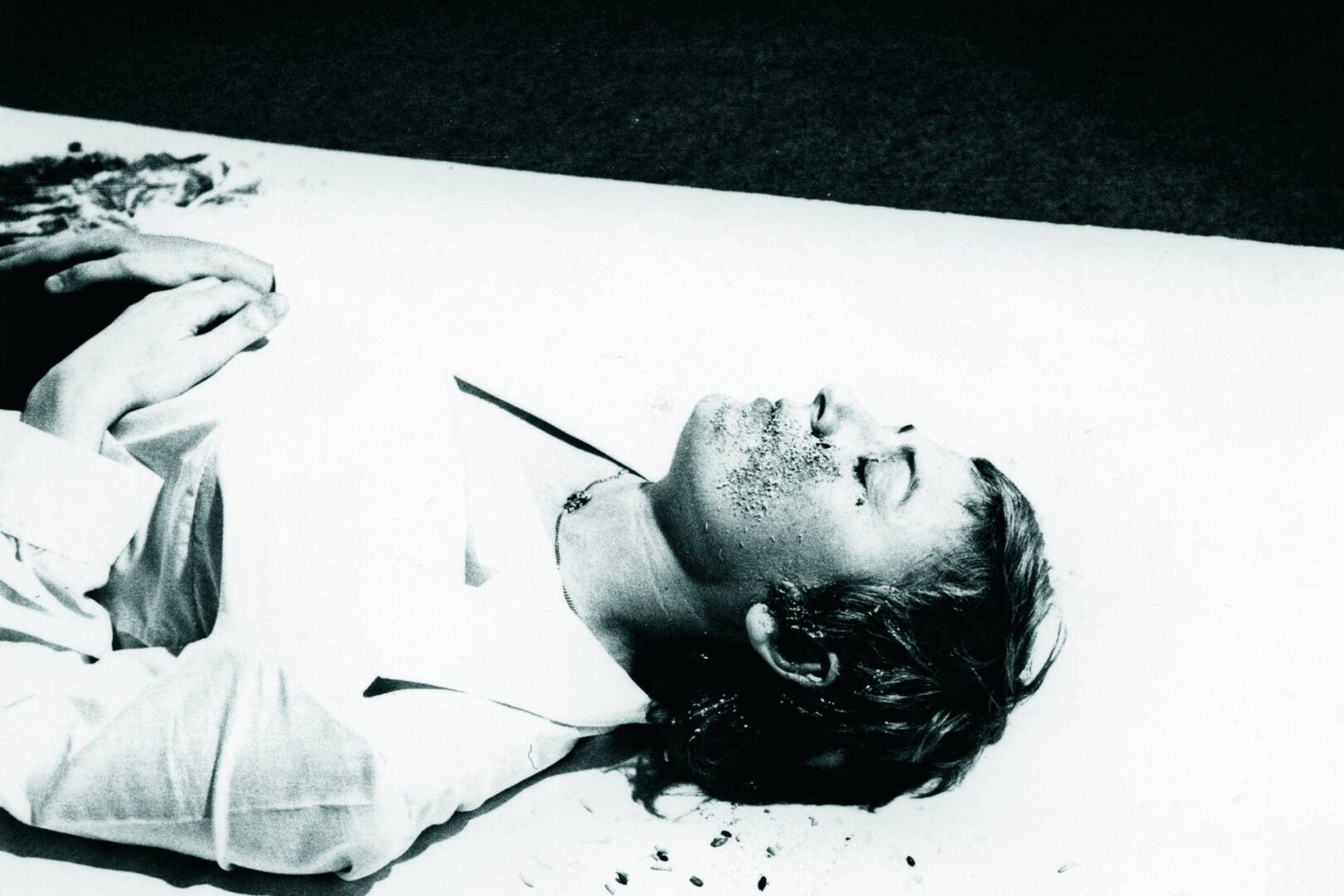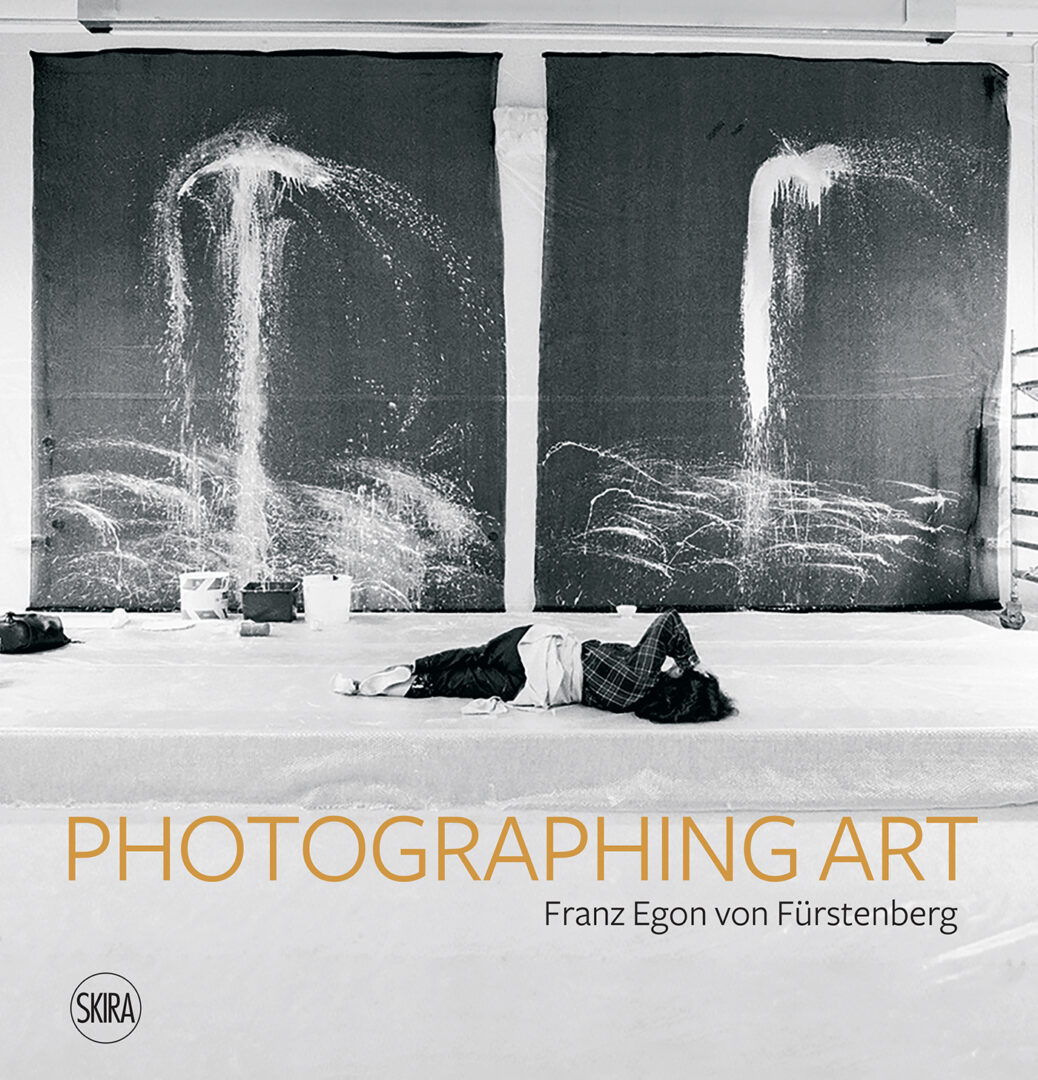Images of life and work alongside portraits of contemporary artists. Photographing art becomes the recollection of a creative tribe manifestation
Photographing Art – a tale of moments
«Photographing art is not about memories» states Adelina Cüberyan von Fürstenberg, curator of the volume and Franz Egon von Fürstenberg’s wife. It rather depicts the pulse of art and its meaningful interplay with humanity, inclusion, and science. In a conversation about the incipit of the project, she addresses how Photographing art «is not a book about nostalgia, it is about the stratification of an experience».
Born in Berlin in 1939, the dutch-Mexican photographer Franz Egon von Fürstenbergà escaped Germany during the second world war, moving to Spain. He absorbed the experience and culture of many social contexts, spending his adolescence in Kenya, followed by his studies in France and the United Kingdom. With the work experience gained in the United States, he parted towards a fashion career as an assistant of the renowned designer Pierre Cardin. The meeting with his wife in Ginevra embellished his career and perspective on art. Therefore, photographic art becomes an anthem of partnership and love. The love for art, for life, people, the love for each other.
Navigating through the collection of over 20.000 photographs, carefully glancing over the material and archives, Adelina Cüberyan and her husband used the first lockdown as a space for introspection and creation. It took another six months to edit the number of pictures, settling on 500 and then cutting down to a final number of over 250 images accompanied by the realization that every exhibition had its intimate documentation. They sorted through moments and portraits in order to draw a picture of the 1974 to 2018 art life. Participation, unity, and emotional nudity. Everything transpires through the lenses of Franz Egon von Fürstenberg rendering the reality of those times visible and tangible.
Visual participation and the stages of creation
Not a photo album or a timeline of events, the volume composes itself as a choreography of instants, paired with a sense of structure that reserves a seat for the back-scene of art-making. Of all of the contemporary creators immortalized by Franz Egon von Fürstenbergà, from Andy Warhol, Joseph Beuys, Taguo, Mario, and Marisa Merz to Marina Abramovic, Pat Steir, or Janis Kounellis, «nobody plays any role in the photographs from this book. They are who they are», says Adelina Cüberyan.
Each chapter has its own imaginary, intertwined with the words of Lionel Bovier, Alessandra Mammi, Melissa Rerat, and Denys Zacharopoulos, who enrapture the atmosphere of the segments. Togetherness, Performances, and Behind the scene are some of the first words to categorize the pictures Franz Egon von Fürstenberg was taking in such a natural, unposed manner. Adelina Cüberyan recalls how the largest interest of her husband is, in fact, the performances. He masters their portrayal in a personal way, as a spectator and not a promoter of a show. Art and science are a confession of the holistic gene of genius where «the photographer’s eye is not only on art but also on research».
It is meaningful to notice how the portraits of scientists are different from those of artists, as the curator observes. In Crossroads, Under the Sun, and Here and There, the intersection between humans and spaces as well as cultures is more effervescent through the gaze the photographer has over the territory of an artist, belonging to nature and the world. The honesty of each picture imprints a humbling retinal effect, where equity seems not only reachable but already present. «We need this natural way of being», emphasizes Franz Egon von Fürstenberg’s wife, explaining how art is something you find in life. It becomes Photographing the life of art.
The medium is absent. Egon’s gaze in photography
There is clarity and serenity in the photographs Franz Egon von Fürstenberg takes, dedicating them to the very moment they have been taking in. As his wife confesses, «He is doing it for himself. He is very empathic with the world, and this is also seen in his photography».
The artist presents his work as a declaration of what being part of something looks like, crafting a manifesto for reality, stating: «Above all, I look for the instant, and I snap the image of a precise situation. But I have never been a photo reporter—rather, a collector: I capture those moments and I conserve them».
Photographing art is unique because it embeds contemporary art history in a non-mathematical way.
Technique, precision, fixation all vanish together with the medium to create space for rawness and serendipity «Egon’s art lies in his approach, in the use he makes of the camera—the best that is possible—as the means to be there and share the sense of presence with the others». Moreover, considering contemporary tools and the advancements in technology, making such photographs seems almost accessible.
However, Franz Egon von Fürstenberg’s work is about «a presence visible in the ability to wait for that unexpected moment when people feel confident with those around them and not disturbed, for the photographer becoming an organic part of the group».
A focus on humanity and interaction through real-life imaginaries
What invades the photographic space is a sensation of the humane drive towards honesty and passion shaped by performance, painting, or science. Photographing art opens up a conversation about the evolution of creation. The pictures attempt to digest the changes in people manufacturing masterpieces alongside their relations. They convey the role artists play within the social and natural environment.
«Artists are there not as in a frozen image, but in a moment of living art in a living context in real life, and what happens there relates to the making of art and is part of the series of movements one makes». We have almost involuntary emerged in a world of visual cosmeticize with filters transpiring as reality through digital media. Photographing art speaks volumes of the differences between reality and augmented: «Especially today that photography is used to promote mostly artificial and fake images of life, art, and artists, of richness and poverty, of terrors and miracles, these photographs are glimpses of another level of human values and human relations».
Notoriety and status don’t depersonalize the human in For Egon von Fürstenberg’s work. It enriches the search for something both hidden and transparent, where a human stays human, and «the way to present them never transforms people in a set of samples». Images relay on the artists’ work as the foundation of their emergency to express something at a certain time. «Egon’s pictures depict that intimate esteem which originates from the others’ courageous and imaginative way to live their own life and develop their own work, with poor budget and rich enthusiasm» further attests art Historian, art critic, and curator Denys Zacharopoulos. In this way, the images describe a feeling, a mood, and an interaction. As the volume’s curator suggests, you understand through the pictures and you discover things that were always there. She remembers the Joseph Beuys by Andy Warhol chapter, where «during the shows, Joseph Beuy didn’t like Andy Warhol and what I learned was to understand what was going on. I understood what was going on only with the photographs».
Essentially, Egon von Fürstenberg’s work reshapes the dialogue between the subject and the camera, creating room for a photography genre of essential but profound human communication: «For Egon von Fürstenberg a portrait is not necessarily a face. It is firstly a gaze and a movement of the body. In his photographs, people are always caught while they are looking at the photographer or at what is before their very eyes, and not at the camera as to a mirror or a tool for self-representation».
Photographing Art
The book presents a selection of photographs taken by the Mexican-German photographer Franz Egon von Fürstenberg between 1974 and 2018.
Born in 1939 in Berlin, Franz Egon von Fürstenberg worked as an assistant to designer Pierre Cardin in Paris and then to photographer Alain de Ferron in Geneva, where he met and married Adelina Cüberyan, his inseparable life partner.
Over the years he has collaborated with a large number of artists and exhibition venues around the world and has published his photographs in magazines, newspapers and art catalogs.




















